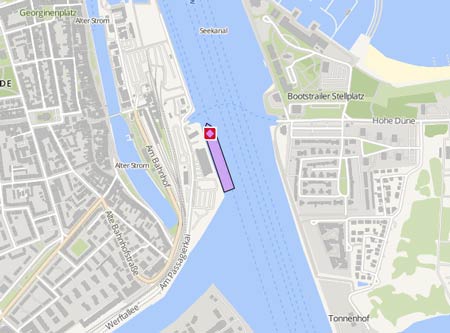ULTRA GALAXYverschrottet
Kurs/Position
Die letzten Häfen
Die letzten Wegpunkte
Die neuesten Nachrichten
Clean up operations continued
Clean-up operations were continuing after the recent oil spill that has now been confirmed as originating from the wreck of the 'Ultra Galaxy'. 180 people in 12 teams were cleaning beaches along a 40 kilometres section of coastline. The Shanghai Salvage Co, also known as China Ocean Engineering Solutions Limited, was appointed in 2024 to undertake the wreck removal operation. The SAMSA had immediately activated its pollution response plan in response to the spill. This had included a full survey of the affected areas to assess the extent of the pollution. Preliminary assessments indicated that the spill had several areas: •Tormin mineral sands mine: ramps 3, 4 and 7, • small parts of the Transhex mining area, • Robbe Eiland [Seal Island], • Papendorp, 700m south of the mouth of the Olifants River, • Strandfontein North: patchy coverage, and • Strandfontein South: Kommetjie and Die Hel. Doringbaai had been surveyed and remained clear. Easterly winds had pushed the oil slick offshore and a red tide had arrived. Cape Nature confirmed that no oiled birds had been found on the affected beaches or at the 45,000-strong Cape Gannet colony at Bird Island in nearby Lambert’s Bay. Also, the biologically critical Olifants River estuary had not been impacted. Since the wreck removal operation began in December, just over 4,200 tons of material had been successfully removed by tug and barge for safe disposal in Saldanha Bay. The salvaged steel was processed in Cape Town. Other hazardous materials were being handled at the Vissershok hazardous waste disposal site.
Oil leaked during wreck removal
Clean-up operations were ongoing after oil escaped from the wreck of the 'Ultra Galaxy' during salvage operations. The oil, which was trapped within the wreck, leaked during the complex wreck removal process. Clean-up operations were carried out with a workforce of around 180 people in 12 teams and progressing steadily. As the risk of oil escaping during operations of this nature is anticipated, robust contingency measures are always in place. The South African Maritime Safety Authority stated on Jan 29 that SpillTech, a dedicated spill management company, has been on site from the onset of the removal operation to handle such incidents promptly and effectively. To safeguard marine life and coastal ecosystems, the SAMSA is working closely with SANCCOB (Southern African Foundation for the Conservation of Coastal Birds) and Cape Nature, both of which are on standby to respond should wildlife be affected. The wreck removal operation began in December, and approximately 4206 tons of wreckage have been removed from the site.
Wreck removal underway
he South African Maritime Safety Authority (Samsa) said that the work to remove the 'Ultra Galaxy', which had run aground on July 9, 2024, near the town of Lutzville, was ongoing and all discharged oil has been contained to the immediate area surrounding the vessel. The Shanghai Salvage Co. has been appointed to carry out the wreck removal operation. So far, more than 3 748 tonnes of material had been successfully removed from the seabed and wreckage and transported via tug and barge for safe disposal in Saldanha Bay. Hazardous waste has been managed in accordance with the Waste Management Plan, with steel being processed in Cape Town, while other hazardous materials are handled at the Department of Forestry, Fisheries and the Environment’s Vredehoek Hazardous Waste Disposal Site. Pollution response and environmental compliance efforts were being led by SpillTech and include the deployment of a workboat towing absorbent booms around the wreck during the cutting process as well as booming off the engine and aft sections to contain any potential oil spills. Any remaining oil that may have escaped or recharged from the wreckage removal programme was contained to the immediate area around the wreckage and beach and did not drift further south. The Samsa was conducting regular inspections along with the DFFE to ensure compliance with environmental standards. A final joint inspection will be undertaken to confirm that the site has been restored to its natural state before Samsa issues formal cessation approval. The operation is expected to be completed within the next three to four months.
News schreiben

